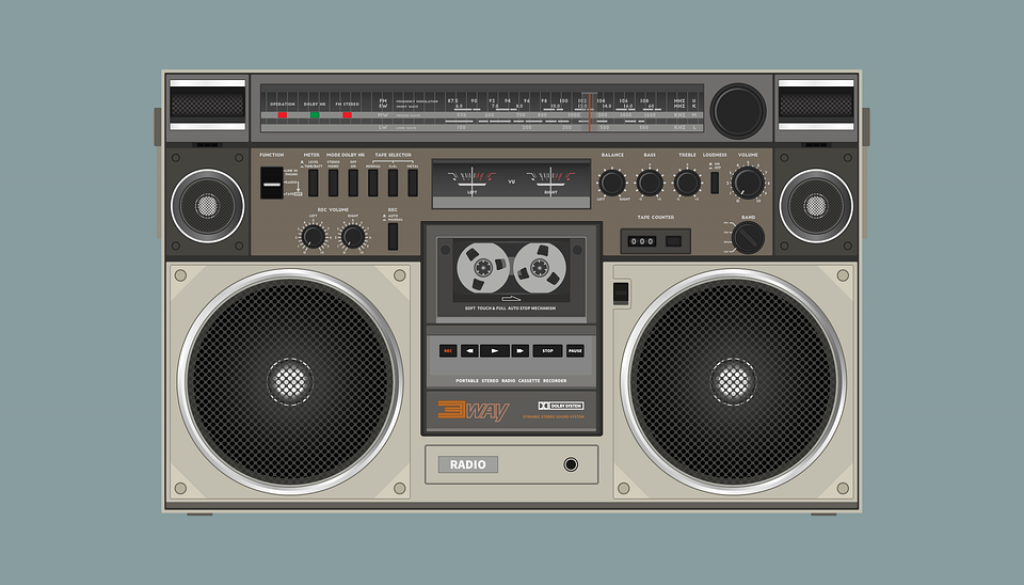Radio Technology
Have you heard about the term radio? Do you know how we can define the radio? Or what is the major purpose of the radio? Even have you use radio anywhere at any place? Here in this article, we shall discuss the term “Radio”.
The activity of broadcasting or transmitting sound program to the public is known as Radio. The transmission and acceptance of electromagnetic waves of radio frequency, particularly those transferring sound messages is radio.
On What Technology Radio Is Working?
Radio waves are emitted by electric charges undertaking acceleration. They are caused by the artificial method by time changing electric currents, embracing of electrons flowing back and forth in a metal conductor called an antenna.
In dissemination, a transmitter creates an alternating current of radio frequency which is applied to an antenna. The antenna discharges the power in the current as radio waves. When the waves wallop the antenna of a radio receiver, they impel the electrons in the metal back and forth, persuading a tiny alternating current. The radio receiver associated with the sustaining antenna perceives this oscillating current and boosts it.
As they travel afar from the communicating antenna, radio waves unfurl out so their signal strength lessens, so radio transmissions can only be grossed within a restricted range of the transmitter, the distance be contingent on the transmitter power, antenna radiation pattern or ornamentation, receiver sensitivity, noise level, and appearance of curbs between transmitter and receiver.
An omnidirectional antenna communicates or grossed radio waves in all directions, while a directional antenna or high procure antenna grossed radio waves in a beam in a particular direction, or grosses waves from only one way or direction.
Radio waves move in a vacuum at the speed of light, and in the air at very near the speed of light, so the wavelength of a radio wave, the distance in meters between abutting crests of the wave, is inversely proportional to frequency.
The other kinds of electromagnetic waves apart from radio waves; infrared, visible light, ultraviolet, X-rays and gamma rays, are also capable to carry information and be used for transmission.
The wide use of radio waves for telecommunication is mainly due to their advisable or preferable propagation properties stemming from their large wavelengths.
Radio waves have the potential to pass through the atmosphere, foliage, and most building materials, and by diffraction can flex around hurdles, and unlike other electromagnetic waves, they are liable to be disbanded rather than sucked up by objects greater than their wavelength.
Frequency Terms And Their Abbreviations:
| Terms | Cycle Per Second | Abbreviations | Equivalent |
| 1 hertz | 1 | 1 Hz | |
| 1 kilohertz | 1,000 | 1kHz | 1,000 Hz |
| 1 megahertz | 1,000,000 | 1 MHz | 1,000 kHz |
| 1 gigahertz | 1,000,000,000 | 1 GHz | 1,000 MHz |
Wavelength and Frequency:
Wavelength and frequency are interconnected. Splitting the speed of the electromagnetic wave (c) by the wavelength (designated by the Greek letter lambda, λ) proffers the frequency: f = c/λ. Thus a wavelength of 10 meters has a frequency of 300,000,000 splittings by 10, or 30,000,000 hertz (30 megahertz).
The wavelength of light is much tiny and small than that of a radio wave. At the center of the light spectrum, the wavelength is about 0.5 micron (0.0000005 meters), or a frequency of 6 × 1014 hertz or 600,000 GHz (one gigahertz equals 1,000,000,000 hertz).
The maximum frequency in the radio spectrum is normally taken to be about 45GHz, commensuration to a wavelength of about 6.7 millimeters. Radio waves can be created and used at frequencies at bottom-most than 10 kilohertz (λ = 30,000 meters).
The Superheterodyne Principle:
For information to be transmitted, it must be connected to a radio-frequency carrier or bearer wave, which is then transmitted in a provided frequency channel. The bearer wave and information can be picked up by a receiver tuned to this channel.
The procedure by which the information is connected to the carrier wave is modulation. Modulated carriers are covered in their separate slots or channels; if transmitters are geographically banned to each other, they must not use the same channel or overlap each other’s channels. If such overlap occurs, serious change results—two radio programs may be heard equivalently or one may form a misrepresented background to the other.
Maxwell’s Prediction and Radio:
Michael Faraday was an English Physicist who demonstrated that an electric current can produce a local magnetic field and that the energy in this field will go back to the circuit when the current is ceased or changed in the very early part of the 19th century.
James Clerk Maxwell, professor of exploratory physics at Cambridge, in 1864 demonstrated mathematically that any electrical interference could produce an effect at a tolerable distance from the point at which it materialized and prognosticate that electromagnetic energy could move outward from a fount as waves moving at the speed of light.
Radio-Wave Experiments Of Hertz:
At the time of Maxwell’s prophecy, there were no known means of cultivating or perceiving the existence of electromagnetic waves in space. It was not until about 1888 that Maxwell’s theory was scrutinized by Heinrich Hertz, who elaborated that Maxwell’s prophecy was true at least over short distances by inserting or plonking a spark aperture (two conductors separated by a short aperture) in the middle of a parabolic metal mirror.
A wire ring affixed to another spark aperture was placed about five feet (1.5 meters) away at the focus of another parabolic collector in line with the first.
A spark jumping across the first aperture engendered a smaller spark to caper across the aperture in the ring five feet away. Hertz showed that the waves moved in straight lines and that they could be reflected by a metal sheet just as light waves are reflected by a mirror.



